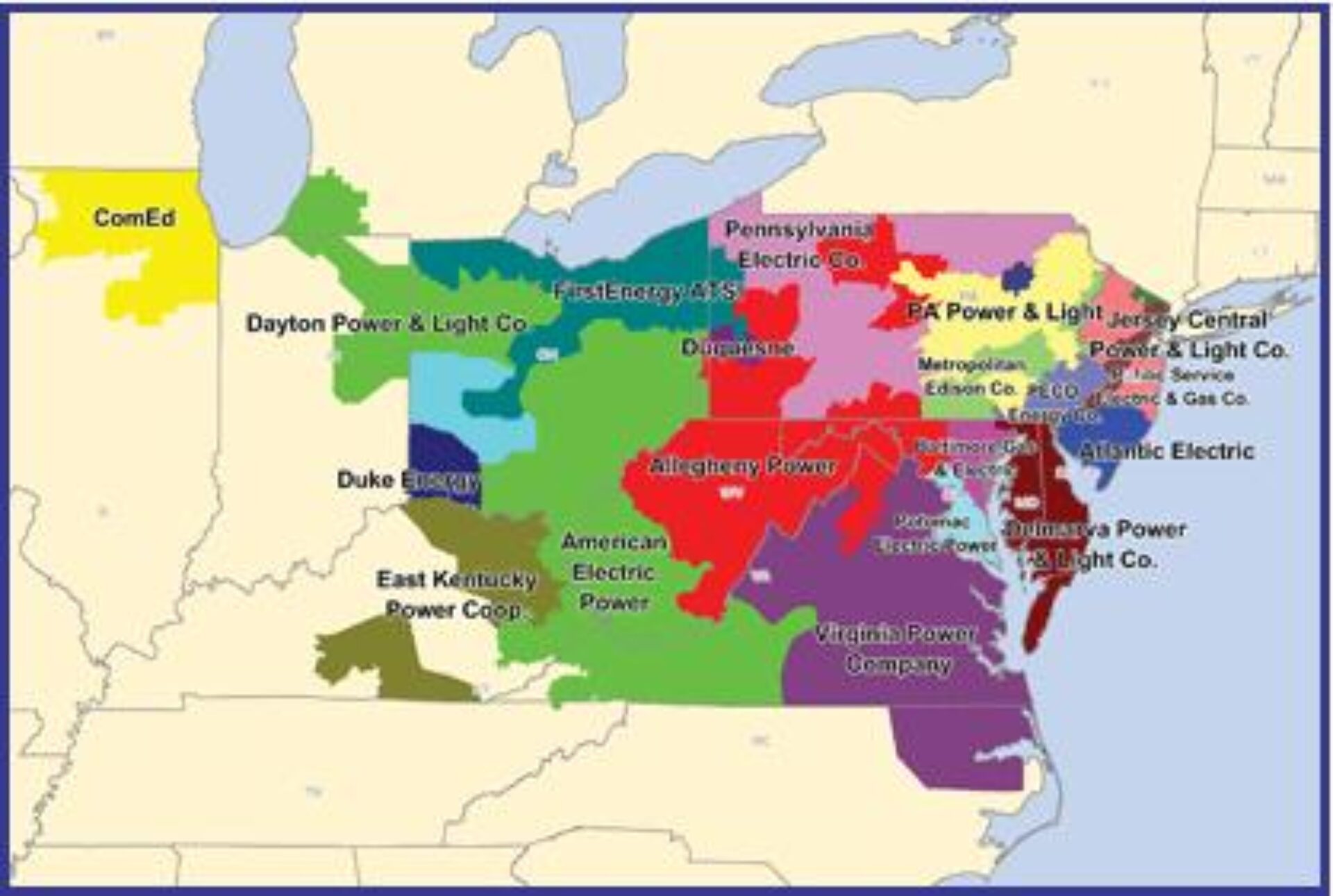
Top Lines from PJM’s Capacity Auction
PJM Interconnection, the operator of the electricity grid serving 13 states and D.C., runs its annual capacity auction in order to ensure it has enough resources to provide power in the future. These “Base Residual Auctions” procure enough resource supply to meet forecasted power demand, plus a little extra (called a reserve margin) just to make sure reliability is maintained. The capacity auction procures these resource three years in advance of when they are needed, providing price signals for new generation investment and going forward costs for existing resources.
Yesterday, PJM posted the results of its capacity auction for delivery year June 1, 2019 through May 31, 2020. Below are some of take-aways and key questions from the auction:
1. Prices were lower than expected
The PJM-wide clearing price for the Capacity Performance (CP) resources was $100/megawatt (MW) day and $80/MW day for Base Capacity (BC) resources, with certain transmission-constrained areas of PJM clearing at higher prices. These prices were lower than last year’s auction ($164/MW day for CP and $149/MW day for BC) and lower than most analysts predicted. Reasons for the price decline have been attributed to a 1 percent decrease in the target reliability requirement, decreased power demand, lower than expected generator costs (i.e. bids) related to meeting CP requirements, and new low-cost gas resources clearing the market.
2. Significant resources procured
A total of 167,305.9 MW cleared the auction. Of this, 5,373.6 MW (an 84% increase from last year) was from new (predominately natural gas fired) generation and 155.6 MW of generation uprates. 10,348 MW of demand response (DR) cleared, while 1,515.1 MW of energy efficiency (EE) cleared. 969 MW of wind cleared along with 335 MW (an 82% increase from last year) of solar.
3. DR, EE, wind and solar continue to rely on Base Capacity product
Of the 10,248 MW of DR that cleared the market, 94% cleared as BC and 6% cleared as CP. Of the over 1,515 MW of EE that cleared, about 70% was CP and 30% BC. For the 969 MW of wind capacity value cleared, 9.2% was CP and 90.8% was BC. For the 335 MW of solar capacity value cleared, 0.1 % was CP and 99% was BC. The BC product will be phased out next year in favor of the CP product that has greater performance requirements.
4. Reserve margin is very high
This year’s PJM wide reserve margin of 22.4%, which is 5.9% higher than the minimum target requirement of 16.5%. PJM notes this is at least 2 percent greater than previous highs of 20.5% (2012/13) and 20.3% (2016/17).
5. New gas resources in, more existing coal and nuclear out
PJM notes that low energy demand and low natural gas prices have led to lower energy market prices and therefore revenues to PJM generators. For coal, oil and nuclear units, this means higher capacity prices will be required to cover going forward costs. Share prices of some coal and nuclear plant owners fell on news of the auction results and some companies have signified intent to retire uncompetitive resources. This year’s auction cleared around 5,000 MW of new gas generation, signifying enhanced competitiveness of these gas resources.
Key Questions:
- How will these price outcomes impact calls for subsidies and reregulation of generation resources? For example, Ohio, Maryland, New Jersey, Illinois and others states have been exploring out of market strategies to help coal and nuclear plants survive as gas competition increases. Will these calls get louder?
- How will seasonal resources (like DR, EE, wind and solar) participate in capacity auctions in the future? Many of the DR, EE, wind and solar resources participate as BC resources and may no longer be individually eligible for capacity payments after the BC product is phased out before next year’s auction. PJM is working on a strategy, but the clock is ticking.
- Why the high reserve margin? Having an adequate reserve is critical to ensure reliability, but too high a reserve can indicate underutilized resources and higher than required costs to consumers to procure. Luckily, over procurement is happening while costs are low. Is the high reserve margin needed due to intermittent resources, subsidizing underutilized capacity or something else?
Christina Simeone
Kleinman Center Senior FellowChristina Simeone is a senior fellow at the Kleinman Center for Energy Policy and a doctoral student in advanced energy systems at the Colorado School of Mines and the National Renewable Energy Laboratory, a joint program.

